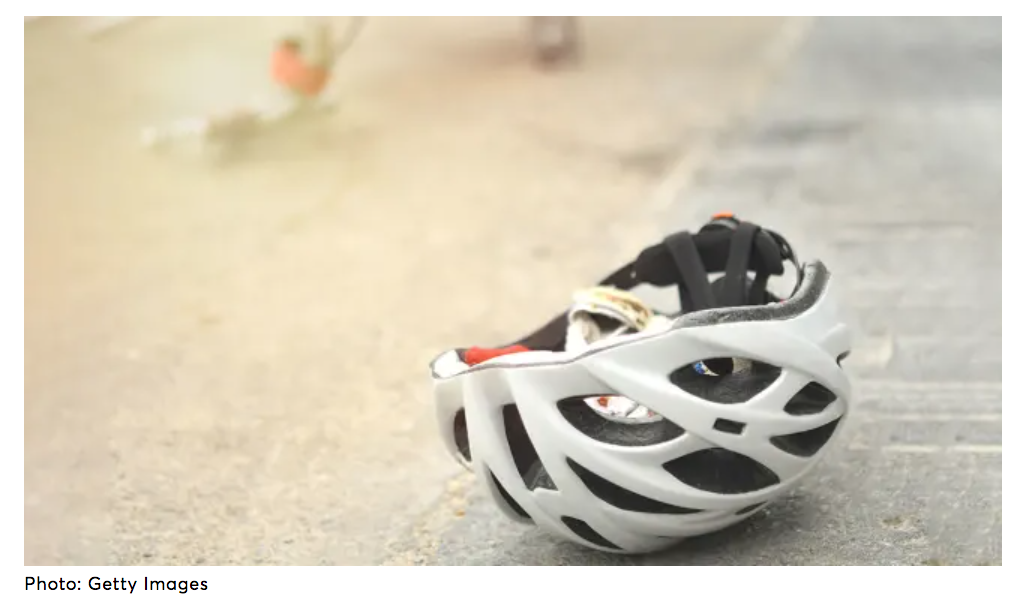There are plenty of great reasons to hop on a bike, whether you are training for a race, trying to make your commute to work healthier, or just trying to get out for some fresh air. No matter why you are riding, you should always be wearing a helmet.
But if it has been stashed on a basement or garage shelf for a while, you may wonder whether you need to replace your helmet, and if it’s still as protective as it was when you first brought it home from the bike shop.
Helmet-wearing is associated with almost a 70 percent lower risk of serious head injury in bicycling crashes, but helmets aren’t indestructible.
One thing experts agree on is that after a crash, you need to replace your bike helmet as soon as possible.
“A helmet can look fine after a crash,” says Rich Handel, a test project leader at Consumer Reports, who has been involved with CR’s bike helmet testing. The outer plastic shell on the helmet may bounce back to a normal appearance, even if the interior foam has been damaged in a way you can’t detect.
“Once that foam is compressed, you are reducing the safety margin you have,” he says. “That’s not going to protect you.”
Crashes aside, many bike helmet manufacturers recommend replacing your helmet every three to five years. But there’s no universally agreed upon standard for how often you should replace your bike helmet.
The Consumer Product Safety Commission, for example, advises that unless manufacturers recommend otherwise, you should get a new helmet every five to 10 years. The Snell Foundation, a standard-setting body that’s known to be one of the strictest in terms of helmet safety, says that normal wear-and-tear is enough to recommend helmet replacement every five years or so, though this is a judgment call, and wouldn’t apply, for example, to an unused helmet stored in good condition. CR experts recommend replacing your well-used bike helmet after five years, “out of an abundance of caution,” Handel says.
But if you really like your old helmet and it’s in good condition, holding on to it for longer isn’t necessarily going to put you at significant risk, according to Randy Swart, director of the nonprofit Bicycle Helmet Safety Institute, and former vice chairman of the helmet and headgear subcommittee for ASTM-International, a nonprofit, voluntary standard setting organization. “My own personal helmet is much older than that,” Swart says, though he adds that there may be other good reasons to get a new helmet, such as more protective technology included in some newer models.
Here’s why CR recommends generally replacing your bike helmet every five years, and what to know if you hold on to one for longer than that.
How Often to Replace Your HelmetCR recommends following manufacturer recommendations or getting a new helmet every five years or so because of the ways a helmet can get beat up over time, according to Handel. A heavily used helmet is going to be exposed to ultraviolet light from the sun, and it might be repeatedly tossed into a locker or a car, where summer temperatures can top 120 degrees Fahrenheit.
A beat-up, worn-out helmet will protect you better than not wearing one, according to Handel, but eventually, you’ll want to replace it.
Depending on where and how it is used, a helmet will be exposed to different levels of wear and tear, plus different environments, including varying degrees of heat and humidity, says Barry Miller, PhD, director of outreach at the Helmet Lab at Virginia Tech, which tests helmets for a variety of sports and conducts research into how helmets can reduce risks for brain injury.
“We would all assume performance degrades a bit over time,” says Miller.
But “the more important reason to upgrade your helmet is due to the technology advances,” he says. Newer helmets may fit better and be more comfortable, and they are more likely to come with technologies designed to reduce what are known as rotational forces, which contribute to concussions. (See CR’s explainer on rotational force mitigation in bike helmets.)
If your helmet has been through the wringer, or if you just want the latest in safety technology, a new helmet may be in order.
The Case for Hanging on to a Helmet LongerWhile you might want a new helmet for stylistic reasons, ventilation, or newer technology, you don’t necessarily need to replace a well cared for helmet for safety reasons alone, according to Swart. That recommendation is largely based on research conducted by engineering firm MEA Forensic, which found in tests of hundreds of helmets that age did not significantly affect the performance of the protective foam in helmets up to 26 years old.
But while the foam in a helmet doesn’t necessarily wear out, other aspects could, including the straps, the adjusters that help you tighten the helmet, or the hard plastic exterior shell. Many of those features are essential for ensuring a secure fit. If the colors have started to fade from sun exposure, that’s likely a sign that the exterior could have been weakened by sun exposure over time, says Swart.
If your helmet is still in good condition and you are concerned about sustainability, Swart points out that there are millions of bike helmets sold every year—potentially meaning that millions are making their way into landfills every year. If you have a reason to get a new helmet, you should, he says, but if you want to hold on to yours a bit longer and it’s in good shape, it should still offer reasonable protection.
https://www.consumerreports.org/bike-helmets/when-you-really-need-to-replace-your-bike-helmet-a5593905789/

 RSS Feed
RSS Feed